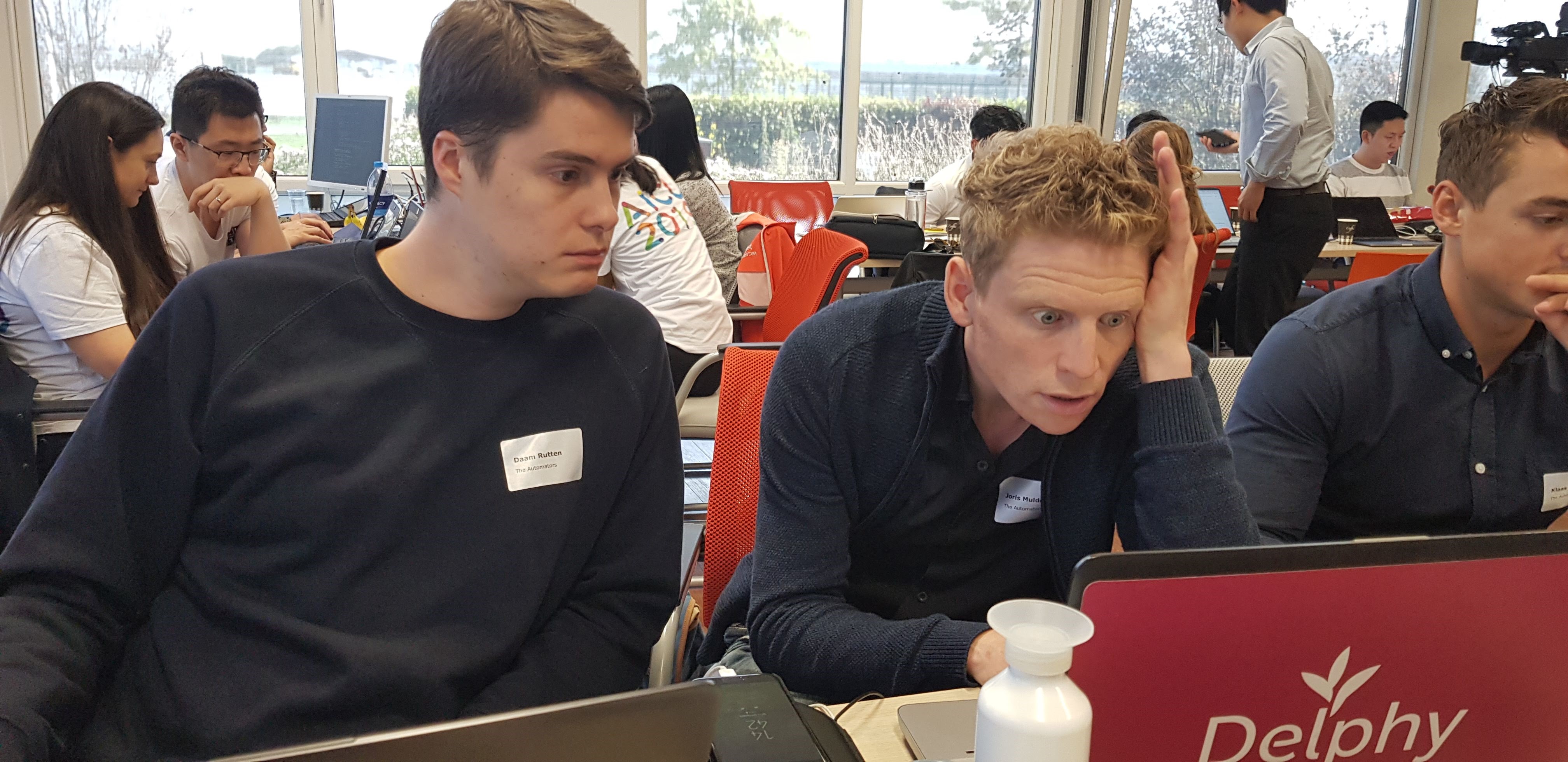Please click here to access the main AHDB website and other sectors.
Autonomous Greenhouse Challenge – can you grow tomatoes without people?
Monday, 4 November 2019
Technologists and growers are being challenged to grow a crop of cherry tomatoes remotely, without anyone entering the greenhouse. Flavia Paganelli, co-founder and CTO of 30MHz, one of the contestants taking part in the competition, tells us more.
The Autonomous Greenhouse Challenge is organised by Wageningen University and Research (WUR) in the Netherlands. It brings together computer scientists and horticultural experts to improve the state of the art in greenhouse cultivation. The end goal is aiming towards an autonomously managed greenhouse, but there is a lot to learn in the process.
The first challenge ran last year, where a team of data scientists from Microsoft achieved better results than the ‘control team’ of growers at producing a crop of cucumbers.
The challenge this year is to grow cherry tomatoes remotely in a greenhouse over six months. All the data about the state of the environment and plants, and the actions that the teams want to take, such as configuring the greenhouse weather, pruning, and irrigating, is done via a software API.
The participants will not visit the greenhouse during the entire six months. The actions that humans need to take such as harvesting and pruning will be instructed via the API – perhaps robots will be part of later editions of the challenge when they become more advanced.
How were teams selected for the challenge?
Five teams are taking part, with 21 registered for the challenge. WUR organised a ‘hackathon’ competition in which a greenhouse simulator was provided and participants had 24 hours to learn the best way to grow cherry tomatoes. The teams were ranked based on the net profit obtained and on the strategy that they planned to use during the actual challenge. They also looked at the composition of the teams.
We are lucky to have an incredible combination of people with a lot of knowledge of the domain, very experienced software engineers, and talented data scientists. We at 30MHz come from the technology industry, but the other half of the team is from Delphy, experts in cultivation.
The teams are currently developing their strategies and, on 20 December 2019, they will take control of the greenhouse.

Is growing tomatoes remotely more challenging than cucumbers?
For cherry tomatoes, the taste is very important: it determines whether the tomatoes are marketable and for how much money. With cucumbers, it’s mainly about getting enough water and nutrients to get them to grow to the right size to have a competitive product.
The taste adds an extra obstacle. The price per kilo will vary during the season, and depending on the quality.
We have been training our models and algorithms with data and simulators but, when we go to the real world, the variables are countless. We can’t have considered every possible case, far from it. There is also the challenge of not knowing exactly what is going on. Some agronomy consultants explain that they sometimes go to a greenhouse, smell the air and decide whether or not to open the windows a bit more. This is not an option during the challenge.
I definitely think we can improve the way we grow food. I wouldn’t say that data and technology can be better growers than humans, but we can combine the experience and knowledge of the experts to guide the technology in optimising growth. I see that we are making discoveries and learning, thanks to data, sensors and technology. There’s a lot to uncover, but it’s not one or the other, we need to work together because there’s nothing we can do with data science without the domain knowledge.
You can find news and updates on the WUR Greenhouse Challenge page and also here autonomousgreenhouses.com/
30MHz is a software and hardware company that offers a central portal for the agricultural sector.

